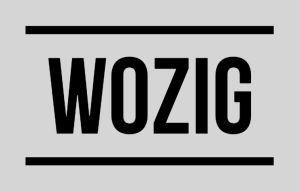Phone:
(980)505-7183
Physical address:
1914 J N PEASE PL
Charlotte, NC, 28262

Effective communication is the backbone of a successful homeowners association (HOA). Whether it’s keeping homeowners informed, coordinating maintenance, or ensuring transparency between the HOA board and the community, streamlined communication plays a vital role in building trust and fostering engagement.
In this post, we’ll explore why streamlined communication is essential for managing an HOA and offer tips on how to improve it in your community.
One of the biggest advantages of streamlined communication is that it builds transparency. When homeowners are kept in the loop regarding important decisions, budgets, and projects, they are more likely to trust the HOA board and its management.
Tip: Regular updates on ongoing projects, financial reports, and meeting minutes can be shared through email newsletters, an HOA website, or a community portal. This keeps everyone informed without overwhelming them with excessive details.
Clear communication helps prevent misunderstandings and reduces the potential for conflicts. When everyone is aware of the rules, procedures, and timelines, there’s less room for confusion or misinterpretation.
Tip: Ensure that all communication from the board—whether it’s about community rules, violation notices, or event announcements—is clear, concise, and easy to understand. A standard template for important notices can help maintain consistency.
Streamlined communication encourages homeowner involvement in community affairs. When residents feel that their voices are heard and their concerns are addressed, they are more likely to engage with the board and participate in meetings, events, and decision-making.
Tip: Use multiple channels—emails, community apps, social media groups, or even physical bulletin boards—to ensure you’re reaching homeowners in ways that suit their preferences. Hosting virtual town halls or Q&A sessions can also help homeowners feel more connected.
Managing maintenance requests and repairs efficiently is crucial to maintaining a well-functioning community. Streamlined communication between homeowners, the HOA board, and vendors ensures that issues are addressed quickly and efficiently.
Tip: Implement an online maintenance request system where homeowners can submit requests, track their progress, and receive updates. This helps keep communication organized and ensures nothing slips through the cracks.
With streamlined communication, homeowners have easy access to important information such as community rules, CC&Rs, financial reports, and event calendars. This reduces the number of inquiries the board receives and allows homeowners to stay informed without needing to chase information.
Tip: Establish an online portal or HOA website where homeowners can access governing documents, submit forms, and check for updates. This creates a one-stop shop for all community-related information.
In the event of an emergency, fast and clear communication is critical. Whether it’s a natural disaster, security issue, or a sudden maintenance problem, having a streamlined communication system in place can help the board respond quickly and keep homeowners safe and informed.
Tip: Set up an emergency notification system, such as text alerts or a dedicated hotline, so that homeowners can receive urgent updates in real time. This helps ensure timely communication during critical situations.
A well-managed HOA encourages collaboration between the board and homeowners by facilitating open communication. When residents feel that their opinions are valued and that they can communicate easily with the board, it leads to a more collaborative and positive community environment.
Tip: Consider creating a feedback loop, such as surveys or suggestion forms, where homeowners can share their ideas, concerns, and suggestions for improvement. This makes communication a two-way street and allows the board to address resident needs more effectively.
Streamlined communication is the key to creating a well-managed and engaged community. By fostering transparency, reducing conflict, and improving responsiveness, the HOA board can better serve the community and ensure that homeowners feel heard and informed. Implementing modern communication tools and strategies can make this process even more efficient and help your HOA run smoothly.